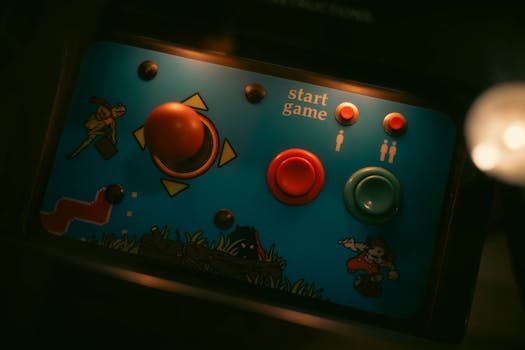Post-Launch Game Support Strategies: Essential Updates and Engagement Tactics for Indie Game Developers
Indie game developers often ask, “What is post-launch game support, and how can it help me?” Post-launch game support means providing updates and engaging with your players after your game is out. It helps you fix problems, keep players interested, and grow your community. In this guide, you will learn best practices for support and updates that can make your game more successful and enjoyable for everyone.
Understanding the Importance of Post-Launch Game Support
Key Takeaway: Post-launch game support is vital for the success and longevity of indie games.
Post-launch game support refers to all the actions taken to help a game after it is released. This includes fixing bugs, updating content, and responding to player feedback. Without proper support, even the best games can lose their player base quickly. Players expect updates and improvements. If they don’t get them, they might leave your game for something else.
Indie developers face unique challenges after launching their games. Many of these challenges come from bugs in the game, negative reviews, and the constant change in player expectations. For instance, a player might love your game but leave if they find a bug that affects gameplay. This is where post-launch support comes in.
Initial Steps for Setting Up a Support System:
- Create Feedback Channels: Set up easy ways for players to report bugs and share their thoughts. This could be a dedicated email address, a Discord server, or a feedback form on your website.
- Monitor Player Reviews: Keep an eye on reviews and comments across platforms. This will help you understand what players like and what needs fixing.

Implementing Effective Game Updates
Key Takeaway: Regular updates keep players engaged and improve game performance.
Updates are crucial for maintaining player interest in your game. They show players that you care about their experience and are willing to make improvements. Here’s how to do it effectively:
- Version Scheduling: Set a regular schedule for updates. For example, plan to release updates every month. This helps players know when to expect new content or fixes.
- Prioritize Bug Fixes: Focus on fixing critical bugs first. Players want a smooth experience. Ignoring bugs can lead to frustration and negative reviews.
- Add New Features Based on Feedback: Listen to your community. If players suggest new features, consider adding them in future updates. This shows you value their input.
Checklist for Planning Updates:
- Identify key bugs to fix.
- Schedule a release date.
- Gather player feedback for new features.
- Test the update before release.
Examples from Successful Indie Games:
- Stardew Valley: The developer regularly updates the game with new content and fixes, keeping players excited and engaged.
- Hollow Knight: Frequent updates and new content releases have helped maintain a loyal player base.
Engaging Your Community for Long-Term Success
Key Takeaway: Building a community around your game is crucial for ongoing support.
Engaging your community is essential for post-launch game support. A strong community can help you identify issues and generate ideas for updates. Here’s how to engage effectively:
- Use Social Media: Create groups on platforms like Facebook and Twitter. Share news, updates, and respond to player comments.
- Set Up Discord Servers: Discord is a great place for community engagement. Players can chat, share experiences, and provide feedback in real-time.
- Create Community Forums: Hosting a forum on your website allows players to discuss issues, share tips, and suggest improvements.
Strategies for Soliciting Community Feedback:
- Hold regular polls or surveys to gather opinions on potential updates. Implementing boosting player engagement mechanics can also enhance community involvement.
- Encourage players to share their experiences and suggestions in your community spaces.
- Recognize and reward players who provide valuable feedback (like a shoutout or a small in-game reward).
Case Study: An indie developer created a Discord server for their game. Players felt valued and engaged when they could chat directly with the developers. This led to a significant increase in positive feedback and a loyal fanbase.

Real-World Success Stories and Best Practices
Key Takeaway: Learning from successful indie developers can inspire your game support strategies.
Many indie developers have successfully combined post-launch support and updates to grow their audience. Here are a few examples:
Celeste: The developers regularly updated the game based on player feedback. They added new levels and features, which kept the community buzzing and engaged. This not only improved the game but also boosted sales and reviews.
Dead Cells: The team behind Dead Cells actively communicates with their players. They listen to feedback and provide regular updates, which has helped them maintain a loyal player base and high ratings on game platforms.
Actionable Tip: Look at your current post-launch strategies. Are they working? Compare your methods with these successful examples. Identify areas where you can improve or adapt their strategies to fit your game.
Conclusion
Recap Key Points: Post-launch game support, regular updates, and community engagement are key to indie game success.
Reinforcing a robust support system not only helps fix issues but also builds a loyal audience over time. Engaging with players and responding to their needs is essential for long-term success.
Call-to-Action: Review your current post-launch strategies. Consider subscribing for more updates and best practices, or share your experiences in the comments section.

FAQs
Q: How can I prioritize game updates and bug fixes without overwhelming my development team after the launch?
A: To prioritize game updates and bug fixes effectively, categorize tasks using the Must, Should, and Could system. Focus on addressing critical bugs that significantly impact player experience first (Must), followed by desirable enhancements (Should), and finally optional improvements (Could), while ensuring regular feedback from the community to guide your decisions without overwhelming the team.
Q: What’s the best way to balance adding new features with maintaining the stability of the game in real time?
A: The best way to balance adding new features while maintaining the stability of the game is to develop new systems in tandem with existing ones, ensuring that the previous system remains functional. This approach allows for continuous playability and reference, minimizing disruption and enabling easy rollback if issues arise.
Q: How do I set up efficient and responsive communication channels to handle player feedback and issues post-launch?
A: To set up efficient and responsive communication channels for player feedback post-launch, create dedicated email accounts specifically for handling complaints and concerns. Additionally, utilize social media platforms and gaming community channels like Discord to engage with players, provide timely updates, and address their issues effectively. Regularly monitor these channels to ensure prompt responses and maintain player satisfaction.
Q: What strategies can I use to allocate resources for ongoing updates and support while preparing for future releases?
A: To allocate resources for ongoing updates and support while preparing for future releases, implement a structured budgeting approach that reserves a portion of revenue specifically for maintenance and updates. Additionally, establish a clear timeline for updates and assign dedicated team members to handle customer support, ensuring that new projects do not compromise the quality of existing games.
Consider exploring different game monetization strategies for indie developers to enhance your approach.
